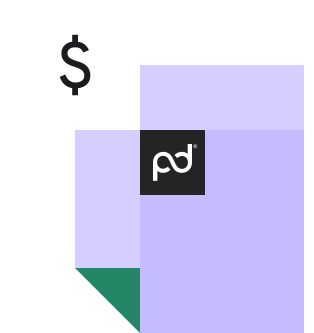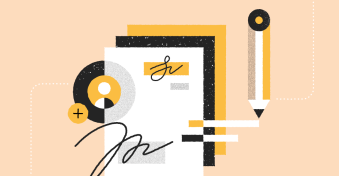Getting a loan is no easy task. In fact, the approval process for a personal loan can take a considerable amount of time, not to mention the strict payback terms associated. Homeowners have now started opting for home equity line of credit (HELOC). The loans that you can receive from opting for a HELOC can be used for a number of things that you may have been putting off due to finances.
With its easy payback terms and extended payback periods, HELOC can be a great way to kickstart your future ambitions. This article will talk all about what exactly a HELOC is and what it entails. Find answers to:
- What is a HELOC loan and how does it work?
- What is a HELOC statement?
- What is needed for a HELOC loan?
- Can you close your HELOC online?
- How do you notarize a HELOC online?
1. What is a HELOC loan and how does it work?
HELOC, or home equity line of credit, is a great way to get a loan for personal reasons. For example, you want to fund your child’s college tuition, or maybe you want to start a new business and need the funds to pay the initial investment. Whatever the reason may be, if you are looking for a considerable sum of money, opting for a home equity line of credit is probably your best bet.
Before we can discuss HELOC, we first need to understand what home equity is. New home buyers usually have to pay a mortgage as monthly installments towards ownership of the whole house. So your equity is the difference between the home’s value and the mortgage balance on the home.
When applying for a HELOC, this equity becomes the collateral. These loans are popular since they have comparatively low-interest rates.
But, if we take a credit card, for example, the interest rate is a lot higher. This is because there is no security or collateral to back the lender. Therefore, the higher the risk associated with the loan, the higher the interest rate.
There are several benefits involved with choosing HELOC as your mode of obtaining a loan. Firstly the low-interest rate, followed by the extended payback period. Once you apply for a HELOC, you are given a line of credit for ten years (this can change based on the terms of the agreement, but typically lasts ten years). This is known as the draw period. During this period, the borrower only has to pay the interest.
After the initial ten years are over, the repayment period starts where the borrower needs to start paying off the loan and the principal amount. This repayment period can span anywhere from 10 years, all the way up to 20 years, giving borrowers enough time to pay back the loan that they have taken against their home equity.
Once an individual has decided to opt for a HELOC, the next step is to look for a lender offering HELOC services. The lender will consider a few things about you and your equity to minimize their risk and, in turn, offer you a low-interest rate. These factors include:
- The current market value of your property
- The mortgage balance you need to pay on your home
- Your current income, debt, and credit score
Once all your documents are approved, and your case checks out, the lender will give you access either through a set of special checks which can be cashed in various amounts against the loan or withdraw the money from a debit card similar to the one that you already have.
Know that the lender can impose specific parameters on the withdrawal of your loan. Therefore, it is always a good idea to inquire with your lender on the minimum and maximum you can withdraw to avoid confusion or inconvenience.
Let’s take an example of person X. Person X wants a HELOC on his house, which is valued at $400,000, and he owes $100,000 on it. If you divide the balance with the property’s value, you arrive at your loan-to-value ratio, which in this case would be 25%.
Now let’s suppose person X wants a loan of $50,000 from his HELOC. The lender will calculate the combined loan to value ratio, which in this case, would be 37.5%. Lenders often ensure that the combined loan-to-value (CLTV) is lower than 80% to minimize risk.
The only downside to a HELOC is the ease of processing. Homeowners have the liberty to put in the second line of credit against their home before the first one is paid off. This puts them at risk of defaulting and ultimately losing their equity. The more you borrow against your property, the higher the repayment and a greater risk of losing equity as collateral repayment.
2. What is a HELOC statement?
A HELOC statement is a periodic report issued by the bank to identify the payments and fees on the HELOC.
A recent Federal Reserve study showed several cases of HELOC statements that had fee disclosure errors. After the constant fee disclosure errors, the Federal Reserve has given banks two options to provide HELOC periodic statements. Once the bank has decided on its course of action, it is paramount that these reports are issued on time. Failure to do so can result in understated charges and potential customer reimbursement.
Non-home-secured open-end plan rules
This option has been in effect since July 1, 2010. Banks can send periodic statement disclosures for HELOC under Regulation Z. They even have the authority to group fees and interest charges separately. Furthermore, they are not obligated to disclose the Annual Percentage Rate (APR). However, if the APR impacts the fees, the bank should:
- Group charges by periodic interest. The bank must also disclose interest totals for the calendar year on top of the statement period
- Group other charges under the “fees” heading identified by type or feature. The fee totals need to be disclosed for both the calendar year and statement period
Home-secured open-end plan rules
The second option requires banks to itemize charges added to the billing cycle under finance charges and disclose it to the person in the form of a HELOC statement. These charges include:
- The fees paid from the start of the HELOC. This can include loan fees, points, and other similar charges. These charges must be disclosed in the first periodic statement and do not need to be factored in with the current APR
- Other charges during the loan, such as advance fees or transactions, must be included in the finance charge heading on the periodic statement. Therefore, banks need to count these charges when calculating the APR
3. What is needed for a HELOC loan
To be approved for a HELOC loan, you need to fulfill rigorous eligibility criteria. This is because the loan you get along with the repayment interest rate is all dependent on how suitable the individual is for the loan.
Let’s look into the factors associated with the eligibility for a HELOC.
15-20% equity in your home
The first thing lenders see before approving a loan against your home equity is the loan-to-value (LTV) ratio of the house. Typically lenders accept loans for LTV ratios up to 85%. This translates into the borrower having 15% equity in the home they are putting up for the line of credit. Maintaining this level of equity is also essential in the case of a real estate market collapse; the value of your house can depreciate to the level closer to your outstanding mortgage balance. This can make it challenging to sell the house in the long run, which would make it a risk for the lender.
Have a credit score in the mid-600s
A good credit score shows the lender your likeliness of paying back your loan. The better your credit score, the more likely you will get a better interest rate which translates into a considerable amount of money saved during the drawing and repayment period. The better the credit score, the less risk for the lender, and they are more likely to approve your loan.
Have a debt-to-income ratio of 43 percent or lower
A debt to income ratio is, as the name suggests, the debt you owe against the income you earn in a month. The lower your debt to income ratio, the better your chance of getting your loan approved for a better interest rate. Paying off certain debts can help you improve this ratio before going for the HELOC.
Have sufficient income
Lenders want to ensure that the person applying for the loan has a steady income stream which they can use to pay back the loan. A better income also improves the debt to income ratio, which improves your chances of getting approved for the HELOC.
4. Can you close your HELOC online?
Closing a HELOC refers to the repayment of the entire loan and closing the line of credit. Depending on where you have obtained the loan, certain charges are involved that need to be paid to complete the line of credit against your home equity.
HELOC is widely accepted, but closing it can be a lengthy task if done manually through a bank. It takes up to 90 days and several visits to the bank for you to close your HELOC, even after you have paid it off. Therefore, you must close the HELOC to ensure that there are no annual fees against your account for the credit line.
With more lenders and borrowers getting ready to be a part of this mix, organizations are coming up with eClosing solutions which allow users to close the HELOC seamlessly, all from the comfort of their homes.
5. How do you notarize a HELOC online?
You can use the help of online notary services and e-signatures that offer borrowers a 24/7 notary solution. You can sign the needed documents online and simplify the workflow process. Online notary services streamline the process of closing HELOC and save time for both the lender and the borrower. The 24/7 functionality means you do not need to be up at 9 am to go to the bank; it’s possible to skip lines, reduce your waiting time, and still get the job done.
FAQs
How does HELOC repayment work?
During the draw period of your HELOC, you are only required to make payments on the monthly interest on the amount you borrowed. During this period, the HELOC essentially operates as a revolving line of credit, which you can borrow against and repay up to your established limit. When you make payments to your line of credit during this period (usually around 10 years), you are free to borrow from it again if you choose to.
Once the draw period ends and the repayment period begins, you will be required to make monthly payments to cover your principal, as well as the interest accrued on the amount you borrowed. Typically, you will have 15-20 years to repay the total amount borrowed plus interest.
It is worth noting that HELOC’s can have either a fixed or variable interest rate. With a variable interest rate, your monthly payments may change from month to month and are calculated based on an index and margin.
What is a HELOC used for?
A home equity line of credit (HELOC) is a line of credit that is secured against your home equity and used to establish a revolving line of credit for large purchases or debt consolidation purposes. In other words, it allows you to borrow a certain amount of money based on the cash value of your home (typically up to 85% of your home value).
A HELOC typically has lower interest rates than other types of loans, and allows you to borrow or repay as much or little during your draw period as you would like, up to your established credit limit. This allows borrowers the flexibility to utilize their HELOC as needed for an extended period (usually around 10 years) before having to repay the loan.
What is a HELOC lender?
You can obtain a home equity line of credit (HELOC) from any financial institution that offers mortgages and credit lines. These can include establishments such as banks, credit unions, and they can even be obtained completely online.
What is the name of the disclosure required for HELOCs?
When taking out a HELOC, you will be provided with the Home Equity Line of Credit Early Program Disclosure. This disclosure contains crucial information about your HELOC draw and repayment periods, as well as your line of credit. This disclosure should always be read carefully, and a copy should be stored in your records.
Is HELOC like mortgage?
Yes, since a home equity line of credit allows you to use your house as collateral for borrowing, a HELOC is a form of taking out a second mortgage on your home.
Does HELOC affect your credit score?
Yes, since a home equity line of credit allows you to borrow up to a certain limit and has minimum monthly payments, it will directly affect your credit score. Taking out a HELOC is essentially the same as managing a large credit card, in the eyes of credit companies.
For this reason, you should always take care to monitor and balance your HELOC credit to maintain your credit standing.
Can you open HELOC and not use it?
Yes, one of the main appeals of using a HELOC is that it allows you to use as much or as little as you need to, up to your established limit. A HELOC is much like a credit card used for large purchases and allows you to borrow and repay an established amount within a certain time period (usually 10 years) before you enter your repayment period (usually 20 years).
During this time, you can make monthly payments on your line of credit, which will replenish your balance and allow you to use that credit again if you choose to.
What happens to HELOC when you sell your house?
When you sell a house with a home equity line of credit, the HELOC balance will be repaid for the sale proceeds in addition to your mortgage. Ultimately, this will mean less money for you at closing, however, you will not have to make further payments on the loan once this is complete.
Can you pay HELOC early?
Yes, you can usually pay off your HELOC early within your lending period without incurring any fees or penalties. You should double-check the terms of your disclosure to be certain, just in case.
Another benefit is its paperless nature. Eclosing means you don’t have any physical copy of the documents to keep safe until the closing process is complete. Instead, it can all be done online while creating a backup of the documents on your laptop.
PandaDoc Notary is an excellent example of a notary service used by lenders for eClosing along with other notary processes. PandaDoc Notary enables thousands of lenders to notarize their documents from the comfort of their own homes without the hassle of scheduling visits and extensive paperwork.
PandaDoc Notary offers businesses an all-in-one platform to help them legally collect, sign and manage electronically generated notarized documents. This is great for companies that need recurring notarizations and want a smooth workflow to fulfill these needs.
Wrapping up
Opting for a HELOC can be a great way to get a lump sum amount for a significant expense. HELOCs are more accessible, easier to pay back, and have a much lower interest rate than other loan options. However, you need to ensure that you are aware of all the requirements and conditions in place.
For the lenders, try opting for eClosing solutions to help simplify your tasks and speed up the process of notarization. The time saved from this can help you close more deals with fewer resources. Check out PandaDoc Notary to learn how you can start using eClosing solutions for your business.


